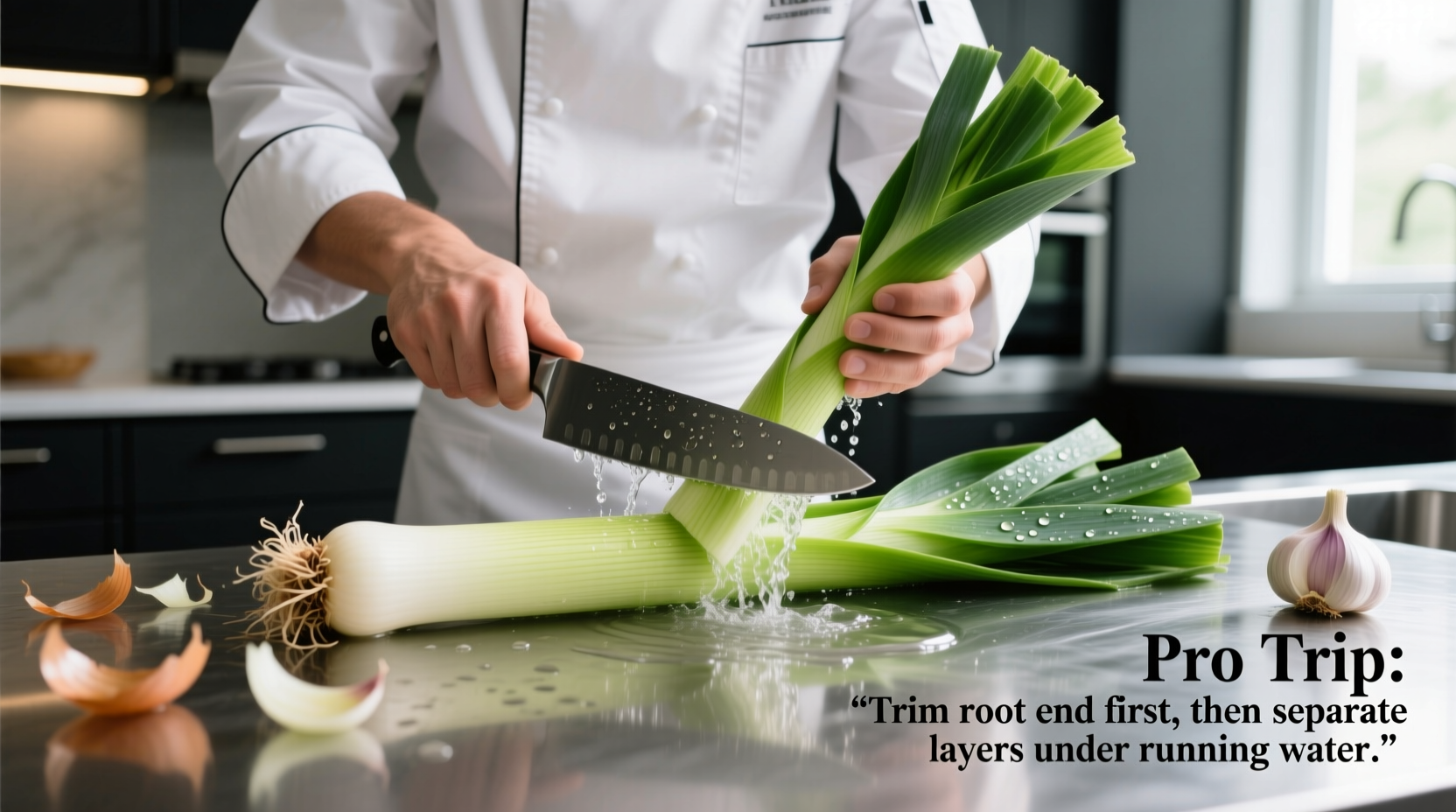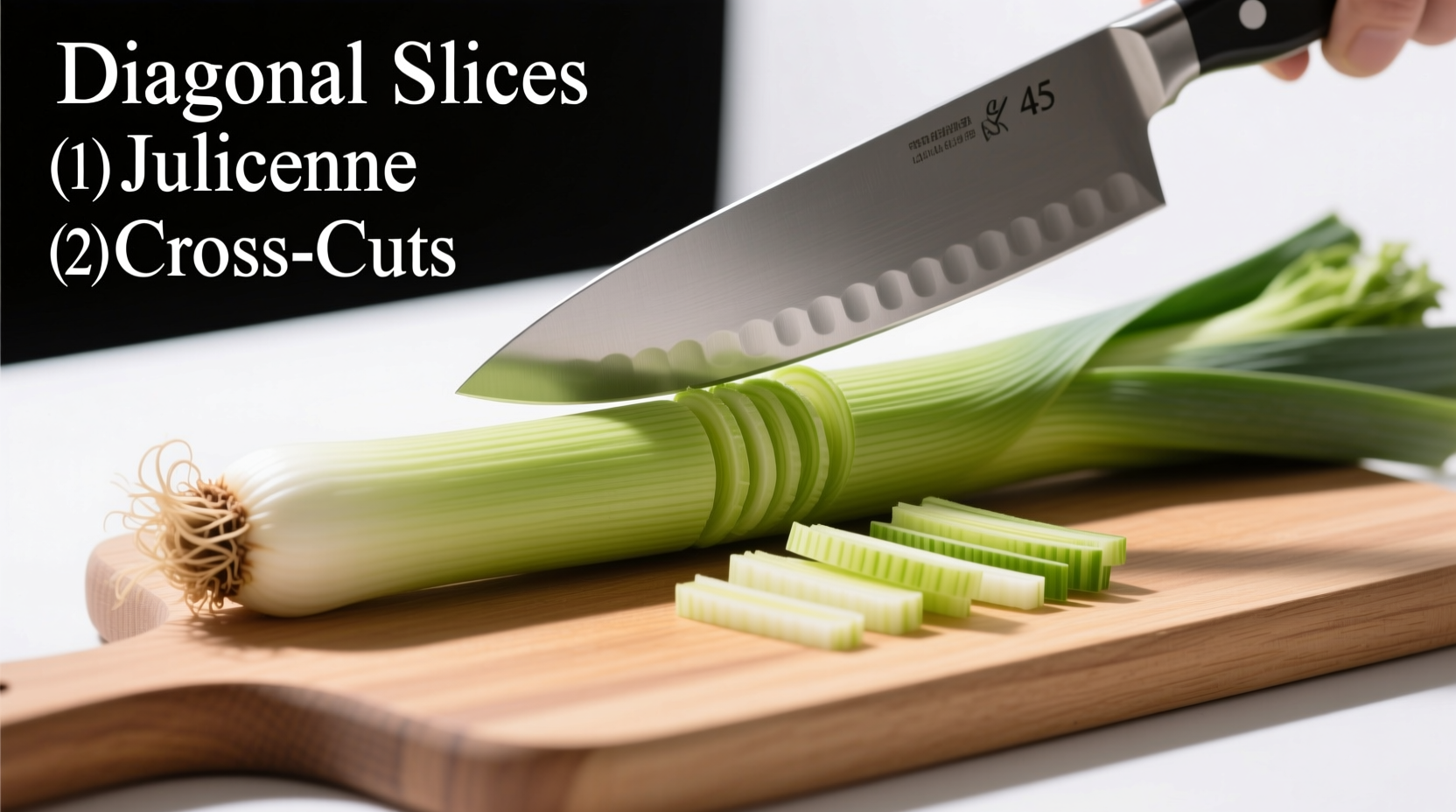Why Proper Leek Cutting Matters for Your Cooking
Leeks often contain hidden pockets of dirt between their layers, making correct preparation essential for both texture and food safety. Unlike onions, leeks require special attention to cleaning before they're ready for your recipes. Getting this right transforms what could be a gritty disappointment into a sweet, delicate addition that elevates soups, quiches, and roasted vegetable dishes.
Understanding Leek Structure Before You Cut
Before reaching for your knife, recognize that leeks have distinct parts with different culinary uses. The white and light green sections are tender and sweet, ideal for most cooking applications. The darker green tops are more fibrous but packed with flavor—perfect for stocks when properly prepared.
| Leek Section | Texture | Best Uses | Preparation Tip |
|---|---|---|---|
| White base | Tender, mild | Sautéing, soups, quiches | Requires thorough cleaning |
| Light green | Slightly firm | Most cooked dishes | Can be used raw in small amounts |
| Dark green | Fibrous, strong flavor | Stocks, braises | Remove tough outer layer first |
Essential Tools for Cutting Leeks
You don't need specialized equipment, but having the right basics makes the process efficient:
- Sharp chef's knife (8-10 inches)
- Sturdy cutting board
- Large bowl for soaking
- Colander for draining
- Kitchen towel for drying
Step-by-Step: How to Cut Leeks Properly
Step 1: Initial Trimming
Remove the root end (about 1/2 inch) and discard the very dark green tops (reserve for stock). For most recipes, you'll want to keep the white and light green portions. The USDA Food Safety and Inspection Service recommends trimming vegetable ends before washing to prevent contamination transfer (source).
Step 2: The Critical Cleaning Process
This is where most home cooks go wrong with leeks. Simply rinsing won't remove the sand trapped between layers:
- Cut leeks in half lengthwise from top to bottom
- Submerge in a large bowl of cold water
- Swirl gently to release dirt (it will sink to bottom)
- Let sit for 2-3 minutes while dirt settles
- Lift leeks out (don't pour, which would stir up dirt)
- Rinse under running water while separating layers

Step 3: Slicing Techniques for Different Recipes
The cut you choose depends on your final dish:
For Soups and Stocks (Half-Moons)
Lay cleaned halves flat side down. Make uniform slices crosswise at your desired thickness (1/8" for delicate dishes, 1/4" for heartier preparations). This classic cut ensures even cooking and attractive presentation.
For Sautéing and Stir-Fries (Julienne)
Cut cleaned leeks lengthwise into thin strips. This technique maximizes surface area for caramelization while maintaining structural integrity during quick cooking methods.
For Roasting (Chunks)
Cut cleaned leeks into 1-2 inch pieces. The larger size prevents burning while allowing edges to caramelize beautifully. Professional chefs at the Culinary Institute of America recommend this cut for maximizing flavor development during roasting (source).
Avoiding Common Leek Cutting Mistakes
Even experienced cooks make these errors that compromise your dish:
- Skipping the soak - Rinsing alone won't remove trapped dirt
- Using a dull knife - Crushes rather than cuts the delicate layers
- Cutting before cleaning - Spreads dirt throughout the leek
- Discarding all green parts - Wastes flavorful stock-making material
Storing Cut Leeks Properly
Proper storage extends freshness and maintains texture. According to food preservation research from the National Center for Home Food Preservation, cut leeks stored in an airtight container with a slightly damp paper towel will stay fresh for 3-4 days in the refrigerator. For longer storage, blanch cut leeks for 2 minutes, then freeze in portion-sized bags for up to 3 months (source).
Putting Your Perfectly Cut Leeks to Work
Now that you've mastered leek preparation, consider these applications:
- Classic vinaigrette - Raw finely sliced leeks add delicate onion flavor without harshness
- French potage - The traditional starting point for many French soups
- Risotto base - Provides subtle sweetness that complements arborio rice
- Quiche filling - Cooked until soft but not browned for delicate flavor











 浙公网安备
33010002000092号
浙公网安备
33010002000092号 浙B2-20120091-4
浙B2-20120091-4